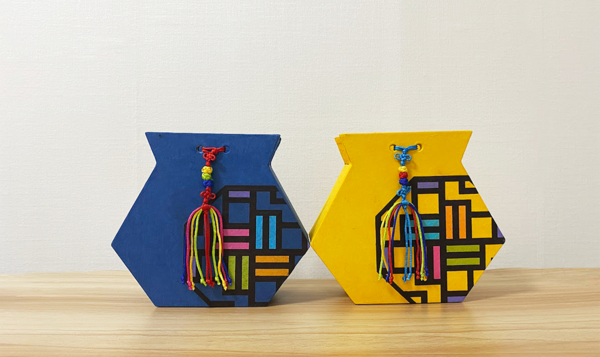News
The Dynamic of Hanji in Jeonj: Challenges and Safeguarding Practices
- NamePassachol Khawdee
- Date07 Dec 2023
- CategoryICH News

Jeonju is popular for its countless form of living heritage, including hanji, making it a desirable tourist destination when visiting the Republic of Korea. For example, Hanok Village features the Jeonju Traditional Hanji Center, a small hanji factory that is open for observation or purchasing different cultural products made of hanji, such as fans and notebooks. Since 2000, hanji has expanded its base into the fashion industry by showcasing creative clothing made of hanji during the Hanji Fashion Show in Jeonju.(( Kim, Y., and Lim, H. (2014). A Study on the Historical Background and Modifying Techniques for Traditional Korean Paper (Hanji) Clothes [Conference paper]. Proceedings of the ITAA-KSCT Joint Symposium, Charlotte, North Carolina.)) Tourists can also gain hands-on hanjicraft experiences at HISC, where interactive learning is provided. Moreover, there are places to discover more about hanji in Jeonju—namely, Jeonju Hanji Museum, Jeonju Hanji School, and Korea Traditional Culture Center.
However, this nationally recognized living heritage does not come without challenge. The decline of hanji in Jeonju revolves around the coming of advanced papermaking machines, the expense of materials, and the lack of knowledge among young generations. Ms. Cho Kyungsook, a culture tour guide in Jeonju, mentions that “there are three components in making hanji: the paper mulberry tree, artisans, and water. However, due to pollution in Jeonju and the lack of interest among young children nowadays, the population of paper mulberry trees has been decreasing with no one to inherit the practice of hanji making.”
Ms. Park Sangsun, a clerk at the Cheon Yang Jae Ji Company, and Mr. Ahn Songsoo, a family employee at the Jeonju Traditional Hanji Center, also share a similar perspective that the young generations tend to opt for higher paying jobs with less intensive labor. Still, hanji is important to Jeonju identity because there are many local practitioners owing to the government support on appointing hanji masters.
Although the challenges are visible, these local practitioners still continue making hanji and convey information. Mr. Ahn Songsoo is the second generation of the center and is still involved in transmitting the papermaking practice to the family’s third generation. Ms. Oh Meunju reflects that “Young children only know about the word hanji but do not understand how it is made. I want to continue passing on the knowledge so that the young generations in Korea know about our cultural history.”
This writing illustrates the transformation of the natural paper mulberry tree to the hanji—living heritage of Jeonju society, which also represents the identity of Korean people. Hanji is a fine example demonstrating how nature has played an important role in sustaining craftmanship. In a wider context, many living heritages around the globe are at risk of disappearing due to natural resources overexploitation, technological advancement, and economic development or tourism promotion that disregards local peoples’ knowledge on nature. Conversely, with an endeavor to respect nature, hanji is still practiced in a traditional form. Thus, without the paper mulberry tree, hanji would not be as it is today.
Even though the spirit of the UNESCO 2003 Convention for the Safeguarding of the Intangible Cultural Heritage embraces changes and creativity, hanji should not only be contemplated as a beautiful paper-made souvenir but also a living heritage from nature. In any other scenarios, the effort from the state to recognize the communities’ abilities to protect their biodiversity and natural resources need to be affirmed((See also UNESCO. 2022. Basic Texts of the 2003 Convention for the Safeguarding of the Intangible Cultural Heritage.)) to ensure environmental sustainability and the viability of intangible cultural heritage for future generations.
QUICK MENU
QUICK MENU 원하시는 서비스를 클릭하세요!
There is no registered quick menu.